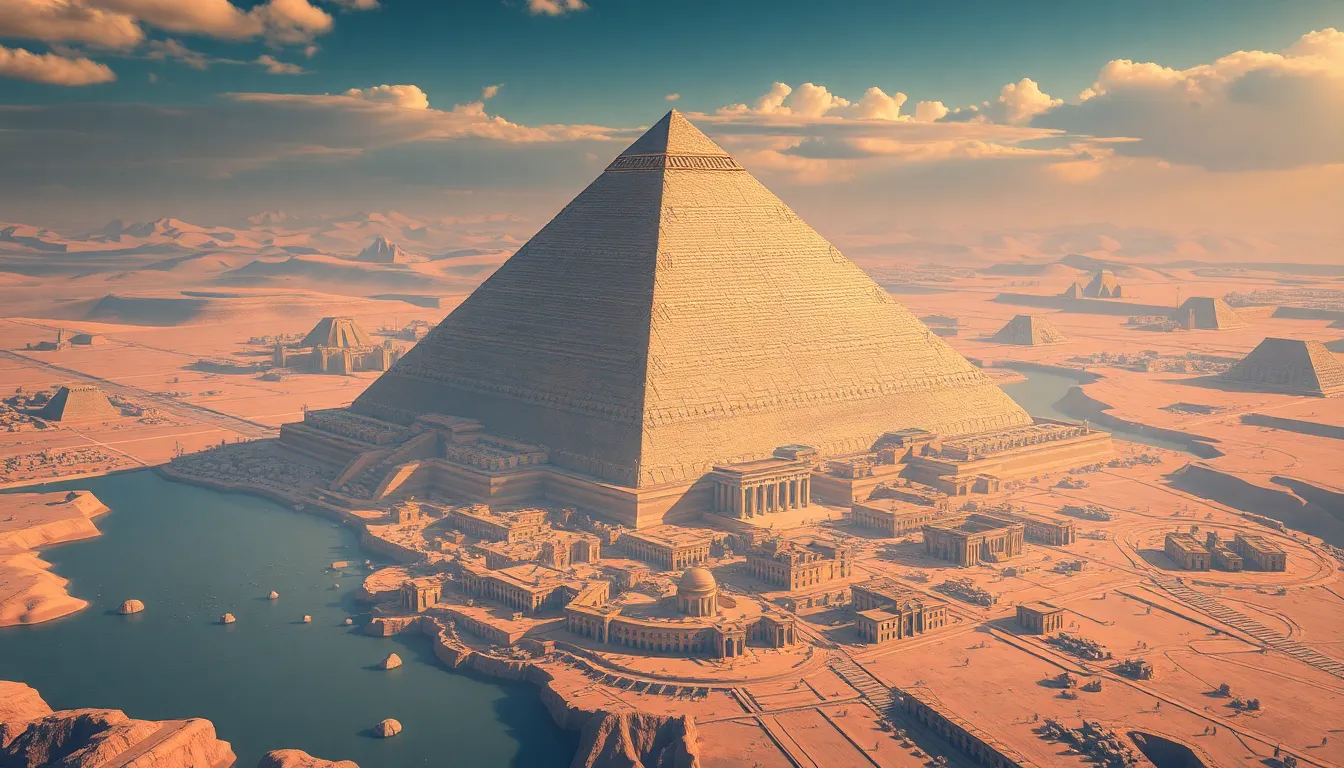The Mythical Geography of the City of Kemet
I. Introduction
Kemet, known as ancient Egypt in modern terminology, represents one of the most significant civilizations in human history. The term “Kemet” translates to “the black land,” a reference to the fertile soil along the Nile River, crucial for agriculture and sustenance. This civilization flourished for thousands of years, leaving an indelible mark on culture, art, religion, and politics.
The concept of mythical geography in Kemet extends beyond mere physical landscapes; it encompasses the spiritual and symbolic meanings attributed to various locations within the region. These elements played a vital role in shaping the beliefs and practices of its people.
The purpose of this article is to explore the intricate relationship between Kemet’s geography and its mythology, highlighting how these elements contributed to the civilization’s identity and legacy.
II. Historical Context of Kemet
The origins of Kemet can be traced back to the unification of Upper and Lower Egypt around 3100 BCE. This unification marked the beginning of a rich and complex civilization characterized by profound advancements in writing, architecture, and governance.
Key historical figures, such as Narmer (also known as Menes), the first pharaoh, played a crucial role in shaping Kemet’s geographical landscape through the establishment of cities, temples, and monuments. The construction of the pyramids during the Fourth Dynasty exemplifies the remarkable architectural achievements that defined Kemet.
The socio-political landscape of ancient Kemet was marked by a centralized government led by the pharaoh, who was considered a divine ruler. The geographic features of Kemet, including the Nile River and surrounding deserts, influenced trade routes, agricultural practices, and military strategies.
III. The Symbolic Landscape of Kemet
The Nile River is arguably the most significant geographical feature in Kemet’s mythology. It was seen as a life-giving artery, providing water, fertile land, and a means of transportation. The river’s annual flooding, known as the inundation, was celebrated and revered as a divine phenomenon.
Several sacred sites within Kemet hold profound meanings:
- Temples: Structures such as the Temple of Karnak and the Temple of Luxor were not only places of worship but also centers for astronomical and agricultural activities.
- Pyramids: The pyramids served as monumental tombs for pharaohs, symbolizing their ascent to the afterlife and connection to the divine.
- Obelisks: These towering structures represented the sun’s rays and were often placed at temple entrances.
The natural features of Kemet, including mountains and deserts, also held symbolic significance. The Eastern Desert, for instance, was associated with the sun god Ra, while the mountains were often seen as sacred spaces connecting the earth to the heavens.
IV. Mythological Elements of Kemet’s Geography
Kemet’s creation myths often feature geographical elements that illustrate the civilization’s understanding of the world. One prominent creation myth describes the emergence of the first land from the primordial waters of chaos, Nun, symbolizing the birth of the earth.
Key deities were associated with specific locations, which further emphasized the geographical importance in mythology:
- Ra: The sun god, often linked to the city of Heliopolis.
- Osiris: The god of the afterlife, associated with the Nile and the city of Abydos.
- Isis: The goddess of magic and motherhood, often linked to the Nile’s annual flooding.
The concept of the Duat, or the underworld, represented a geographical space where souls journeyed after death. It was depicted as a complex landscape filled with rivers, mountains, and various challenges that souls must navigate.
V. The Interplay of Myth and Reality in Kemet
The mythical geography of Kemet significantly influenced urban planning and architecture. Cities were often laid out in alignment with celestial bodies and sacred landscapes, reflecting the belief in the divine order of the cosmos.
Historical records, such as hieroglyphs and inscriptions, often intertwined mythological narratives with reality. This blending of fact and fiction is evident in the way temples and monuments were constructed to reflect both terrestrial and celestial significance.
The importance of ritual spaces in Kemet’s geography cannot be overstated. These spaces were meticulously designed to facilitate ceremonies and connect the earthly realm with the divine. Festivals, rituals, and daily worship were often centered around these sacred sites, reinforcing their geographical and spiritual significance.
VI. Cultural Representations of Kemet’s Geography
Art and literature from Kemet often depicted its landscape and its mythical implications. Tomb paintings, sculptures, and papyrus scrolls illustrated not only the physical geography but also the spiritual beliefs tied to various locations.
The geography of Kemet significantly impacted its religion and cosmology. The alignment of temples with the stars and the use of astronomical observations in agriculture showcased a profound understanding of the relationship between the earth and the cosmos.
Daily life and cultural practices were also shaped by geography. The reliance on the Nile for agriculture dictated the rhythms of life, influencing everything from harvest festivals to social organization.
VII. The Legacy of Kemet’s Mythical Geography
The mythical geography of Kemet has had a lasting influence on later civilizations and mythologies. The narratives and symbols of Kemet were adopted and adapted by cultures throughout the Mediterranean and beyond, contributing to a shared heritage of mythological geography.
Modern interpretations of Kemet’s mythology continue to thrive, with renewed interest in ancient practices, beliefs, and geographical significance. Scholars and enthusiasts alike explore Kemet’s legacy in various fields, from archaeology to comparative mythology.
Archaeology plays a crucial role in uncovering Kemet’s geographical myths. Excavations and studies of ancient sites reveal insights into how geography influenced myth-making and vice versa, providing a deeper understanding of this remarkable civilization.
VIII. Conclusion
In summary, the mythical geography of Kemet is a rich tapestry woven from historical context, symbolic landscapes, and mythological elements. The interplay of these factors shaped not only the civilization’s identity but also its enduring legacy.
The fascination with Kemet’s mythical geography continues to captivate scholars, spiritual seekers, and enthusiasts around the world. As we delve deeper into the mysteries of this ancient civilization, we invite further exploration and study of Kemet’s profound impact on human history and mythology.




